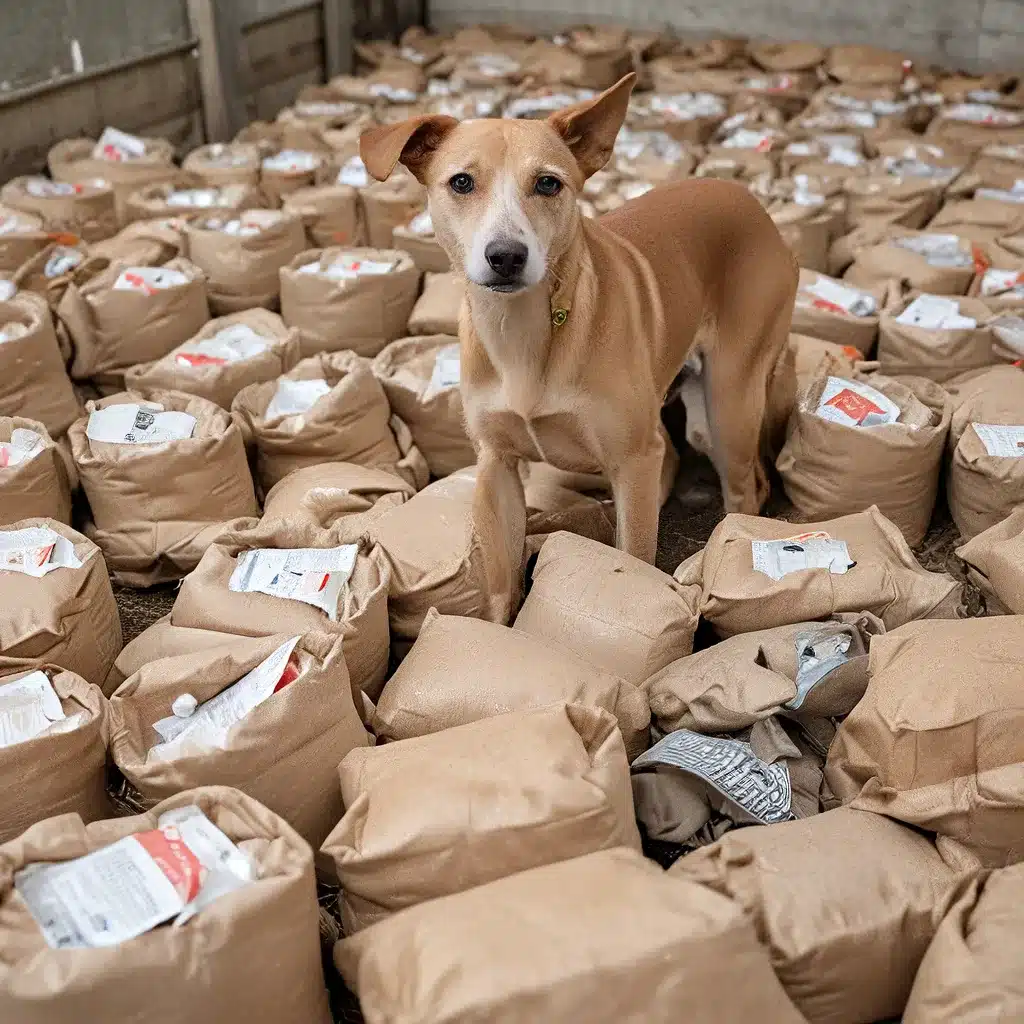
Nourishing the Forgotten Furry Friends
Ah, the life of a shelter pup – so full of hope and promise, yet often shrouded in uncertainty. As the devoted caretakers of these canine companions, we have a sacred responsibility to ensure their wellbeing, from nose to tail. And at the very heart of that charge lies a most fundamental need: proper nutrition.
Let’s be honest, these poor pooches have been through the wringer. Many arrive at our doors malnourished, underweight, and in desperate need of TLC. It’s our job to swoop in, armed with the right rations, and nurse them back to robust health. After all, a balanced diet is the bedrock of any rehabilitation plan.
But this isn’t as simple as grabbing the nearest bag of kibble and calling it a day. Oh no, my friends. Transforming a rescue pup into a gleaming, four-legged powerhouse requires a delicate dance of research, planning, and a whole lot of canine culinary creativity.
The Omnivorous Odyssey
You see, our canine cohorts are a peculiar bunch when it comes to their dietary needs. Unlike their feline counterparts who are obligate carnivores, our canine companions fall squarely into the omnivore camp. This means they can thrive on a combination of plant and animal-based foods, rather than relying solely on meat.
As research has expanded, we now know that a well-balanced dog diet must include an appropriate blend of proteins, fats, carbohydrates, vitamins, and minerals. These essential nutrients are the building blocks for tissue growth, energy production, and overall bodily function.
But here’s the kicker – the specific ratio and quantity of these nutrients can vary wildly depending on the dog’s stage of life. A rambunctious puppy has vastly different caloric and nutrient requirements compared to a senior pup content to nap the day away. It’s a delicate balance that requires careful consideration.
Puppy Power-Ups
Let’s start with the youngsters, shall we? These pint-sized pooches are growing like weeds, so their dietary needs are off the charts. At just 6-8 weeks old, they require a staggering 4-6 meals per day to fuel their rapid development.
Puppy food is specially formulated to meet these demanding nutritional requirements, with higher levels of protein and calcium to support strong bones and muscles. Skimping on quality here can have disastrous long-term consequences, from stunted growth to skeletal abnormalities.
But here’s a pro-tip: if you’ve got a jumbo-sized pup on your hands – think Labrador, Golden Retriever, or German Shepherd – you’ll want to seek out a large-breed puppy formula. These diets strike the delicate balance of protein and calcium to prevent the rapid bone growth that can lead to joint issues down the line.
Adult Appetites
Ah, the “teenage” years. As puppies mature into full-fledged adult dogs around 12 months old, their caloric needs start to taper off. Most pups can transition to an all-life-stage or adult formula, enjoying 2-3 meals per day.
But don’t let their slower growth fool you – adult dogs still require a carefully curated menu to maintain optimal health. Protein, fat, and carbohydrate ratios become increasingly important, as do the inclusion of key vitamins, minerals, and fatty acids.
And let’s not forget our furry friends who lead more active lifestyles. Those hunting, herding, and working dogs have unique nutritional demands that differ from the average couch potato pup. Their diets may require higher protein and fat to fuel their energetic endeavors.
Senior Sustenance
But the real test of our nutritional prowess comes in the golden years. As our canine companions grow long in the tooth, their dietary needs transform yet again.
Senior dog formulas typically feature lower calorie counts, higher protein levels, and reduced sodium and carbohydrates. The goal is to maintain lean muscle mass, joint health, and cognitive function as the inevitable march of time takes its toll.
Many also incorporate supplemental ingredients like glucosamine, omega-3s, and probiotics to combat inflammation and support digestion. And for pups struggling with age-related brain changes, some seniors diets even include medium-chain triglycerides to help slow cognitive decline.
Putting it all Together
Phew, that’s a lot to chew on, isn’t it? But fear not, my fellow pet parents – with a little know-how and a lot of love, crafting the perfect rescue rations is totally within your reach.
The Pet Rescue is here to guide you every step of the way. Our team of canine nutrition experts has scoured the research, crunched the numbers, and tasted-tested a veritable smorgasbord of options to curate the ultimate meal plan for shelter pups.
First and foremost, we recommend sticking to high-quality, recognizable ingredients. Avoid those sketchy, unpronounceable additives and focus on whole, nutritious foods. Think real meat, wholesome grains, fresh fruits and veggies – the kinds of things you’d happily eat yourself.
And when it comes to calories, less is often more. Many adult and senior dogs lead a more sedentary lifestyle in the shelter, so their diet should reflect that lower energy output. Aim for formulas with under 350 calories per cup to prevent unwanted weight gain from just a few extra nibbles.
Of course, every dog is unique, so it’s important to work closely with your veterinarian to determine the optimal nutrition plan. They can help assess your pup’s individual needs and any special dietary requirements based on breed, activity level, or health conditions.
A Labor of Love
Whew, fueling our four-legged friends is no easy feat, is it? But as any dedicated pet parent knows, it’s a labor of love. These rescue pups deserve nothing but the best, and with the right rations in their bowls, we can give them a fighting chance at a happy, healthy future.
So let’s roll up our sleeves, get creative in the canine kitchen, and show these precious pooches just how much we care. After all, a nutritious diet is the foundation for transformation – and we’ve got some pretty incredible transformations to make happen.
Who’s with me?


